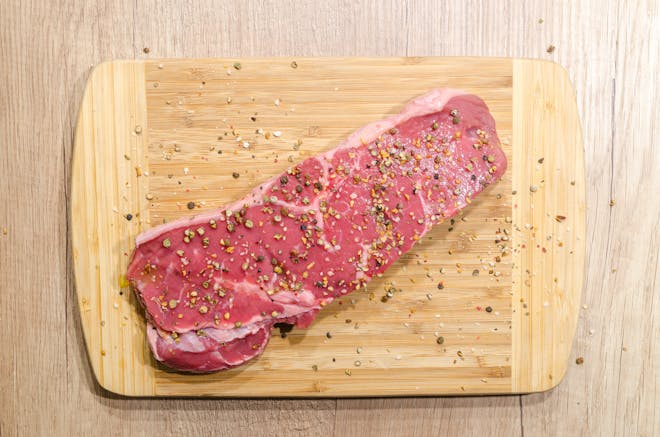Reverse Sear Steak Ribeye: A Culinary Guide
When it comes to preparing the perfect reverse sear steak ribeye, the technique is just as important as the cut of meat. This method, which involves slowly cooking the steak before searing, offers unparalleled control over the doneness and can lead to a beautifully cooked ribeye every time.
Understanding the Reverse Sear Method
The reverse sear is a cooking method that flips the traditional searing process on its head. Instead of starting with a high-heat sear and then cooking the steak to the desired doneness, the reverse sear starts by slowly bringing the meat up to temperature in a low-heat environment. This is typically done in an oven or on a cooler part of the grill.
By using this method, the steak cooks more evenly, reducing the risk of overcooked edges and undercooked centers. It’s particularly effective for thicker cuts like the ribeye, where achieving an even internal temperature can be challenging.
Choosing Your Ribeye
For the best reverse sear steak ribeye, select a high-quality, well-marbled cut of meat. The marbling, or the fat running through the muscle, will melt during the cooking process, adding flavor and tenderness to the steak. Aim for a steak that is at least 1.5 inches thick to truly benefit from the reverse searing technique.
Preparation Steps for Reverse Sear Steak Ribeye
Seasoning Your Steak
Begin by liberally seasoning your ribeye with salt and pepper. You can also add other herbs and spices according to your preference. Let the seasoned steak sit at room temperature for about 30 minutes to an hour to ensure even cooking.
Slow Cooking the Ribeye
Preheat your oven to 275°F (135°C). Place the ribeye on a wire rack over a baking sheet to allow for air circulation. Insert a meat thermometer into the thickest part of the steak, and cook until it reaches approximately 10-15 degrees below your desired final temperature.
Resting the Meat
Remove the steak from the oven and let it rest for about 10 minutes. This pause allows the juices to redistribute throughout the meat, ensuring a juicier bite.
The Final Sear
After resting, heat a cast-iron skillet or heavy pan over high heat. Add a small amount of high-smoke-point oil, like canola or grapeseed, to the pan. Once the oil is shimmering, sear the ribeye for 1 to 2 minutes on each side, creating a delicious brown crust.
Serving Your Reverse Sear Steak Ribeye
Once you’ve achieved the perfect sear, let the steak rest for another 5 minutes before slicing. This rest time is crucial to keep your steak succulent and flavorful. Serve the reverse sear steak ribeye with your favorite sides, such as roasted vegetables or a fresh salad, for a complete meal that’s sure to impress.
Note: It’s essential to use a meat thermometer throughout the cooking process to ensure that your steak is cooked to the proper temperature for your preferred level of doneness. Rare steaks should be removed at 120°F (49°C), medium-rare at 130°F (54°C), medium at 140°F (60°C), and so on.
Mastering the reverse sear technique will elevate your culinary skills and change the way you cook steaks forever. With a bit of practice, you’ll be serving up steakhouse-quality ribeye right from your own kitchen.
